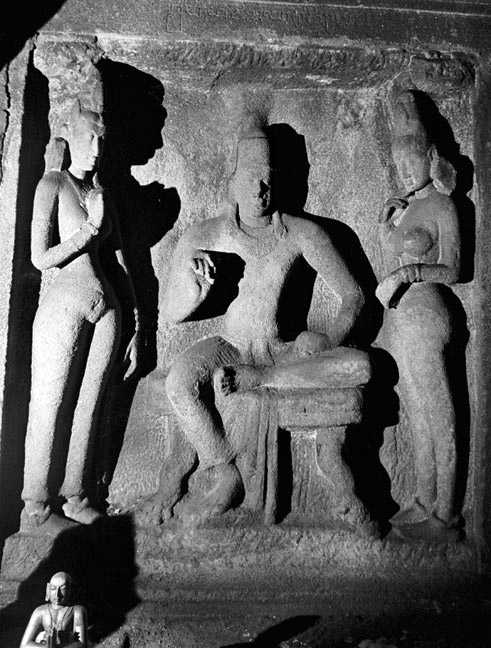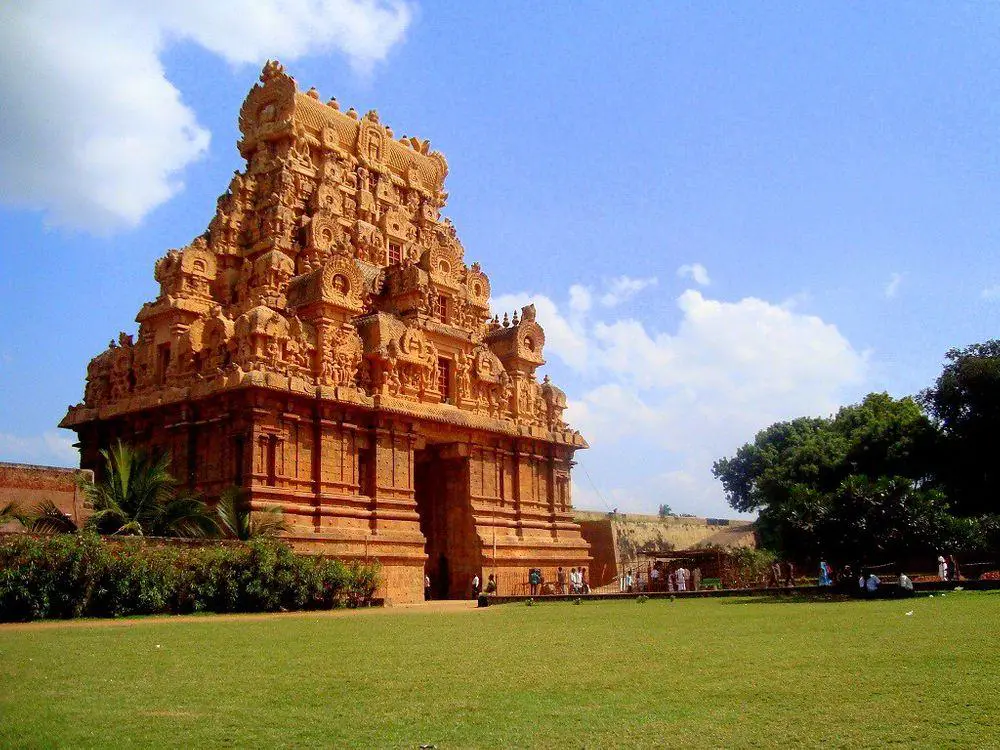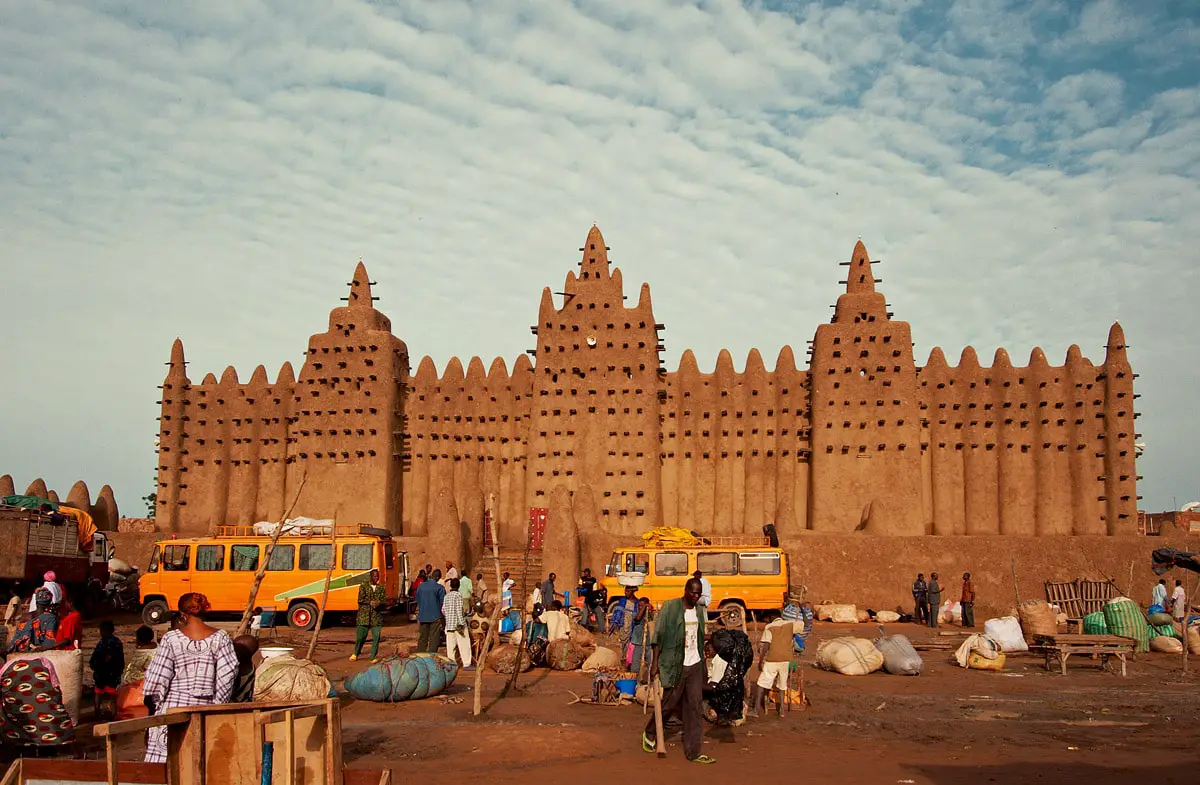World 🢖 Asia 🢖 India 🢖 Tamil Nadu
Hindu shrines 🢔 Religious architecture 🢔 Architectural wonders 🢔 Categories of wonders
Wonder
Adivaraha Cave Temple

 In short
In short
One of the few finished monuments in the magic ancient city of Mahabalipuram is Adivaraha Cave Temple. This rock-cut temple contains beautiful sculptures representing some of the highest achievements of South Indian art.
 39.3%
39.3%
GPS coordinates
Location, address
Alternate names
Age
Religion
UNESCO World Heritage status
Map of the site
If you see this after your page is loaded completely, leafletJS files are missing.
 In detail
In detail
Contrary to some other nearby temples, the Adivaraha temple is under active worship and thus it is not freely available for curious tourists and photographers. It is opened only for a few minutes in the morning.
Architecture
Cave temple has been named after the incarnation of Vishnu – Varaha (boar). There is another temple named after Varaha – Varaha Temple – nearby, thus this temple is named otherwise – Adi-Varaha.
In many aspects the architecture of this temple repeats the other Varaha Temple – with simulated roof structure (traditionally Indian rock-cut temples imitate wooden structures), with pillars adorned with horned lions – vyalas.
Contrary to other nearby temples, this rock-cut temple is darker and damper due to later structure covering the facade. Original (now nearly invisible) facade is magnificent, with four pillars and two pilasters. At the time of construction there opened wide view on tropical lagoon or riverbed.
Colonnade of octagonal pillars divides the main hall in two parts – forepart (maha-mandapam) and rear part (ardha-mandapam).
Maha mandapam starts with the facade construction – four pillars which are adorned with vyalas – horned lions sitting on bases resembling lotus.
Rear part contains a cell – sanctum sanctorum – the main shrine.
Whole temple is adorned with beautiful reliefs.
Art
The art of Adivaraha sculptures surpasses the reliefs of the nearby Varaha Temple.
Forepart is adorned with intricate rock-cut panels with similar themes as in Varaha Temple. But here next to Hindu deities are depicted also some royal figures of the time, possibly Simhavishnu (reigned in 537 – 570 AD) and Mahendra (reigned in 600 – 630 AD). Although the temple is devoted to Vishnu, it is characteristic for Pallava style that next to sculptures devoted to Vishnu here are also Shaivaite motives such as Gangadhara and Durga panels.
Gangadhara panel contains beautiful depiction of four-armed Shiva.
Back wall of forepart contains beautiful panel depicting Gajalakshmi – goddess Lakshmi sitting on a lotus, bathed by elephants and assisted by four otherworldly beauties.
Central panel contains the main relief – devoted to Varaha. It shows Vishnu as a man with the head of the boar defeating Hiranyaksha – a demon who has taken the Earth.
Entrance in the shrine cell is guarded by two guards – dvarapalas with Vaishnavite emblems.
Rear wall of the shrine is adorned with a relief of Varaha made in stucco technique. Most likely this relief has been refashioned numerous times – the current image is not in Pallava style anymore. This relief is covered with bright colors and is worshipped up to this day.
Shrine contains also two panels showing Harihara and Durga. Harihara is a composite depiction of Vishnu and Shiva. Goddess Durga is shown with eight hands, charming and sophisticated, with a parrot on wrist and weapons in hands.
Inscriptions
Inscriptions of Adivaraha Temple rise several unsolved questions.
Floor of the rear hall contains an inscription in Pallava Grantha script – it curses those who don’t worship Shiva. It is weird to find such a text in a temple devoted to Vishnu. It is possible that it has been added in the 11th century.
Another inscription above the Harihara relief lists ten avatars of Vishnu. It is written in Pallava Grantha script, Sanskrit language. It lists Buddha as one of the avatars. Buddhism by this time (the 7th – 8th century) was not a significant religion in this region – thus it is a mystery why Buddha is mentioned here.
On the floor in front of the shrine is an important Sanskrit inscription from the 9th century – it mentions Mahamallapuram. This is the first mention of this glorious city in written sources.
References
- Adivaraha Cave-Temple, Tamil Heritage. Accessed in the 2nd May 2010. Contains the text of inscriptions!
 Linked articles
Linked articles

Wonders of India
India is the seventh-largest country in the world by area, and, naturally, such a large area contains a huge amount of exciting attractions…
Wondermondo considers that India is the second richest center of architectural heritage in the world after Europe and maybe no single country in the world can match it in this respect.

Hindu shrines
Hinduism is one of the oldest religions – possibly the oldest one among contemporary religions and Hindu temples belong to the most impressive religious buildings in the world.

Religious architecture
Since ancient times human talents and skills have been expressed in religious architecture and arts, and traditions and rituals have evolved around pilgrimage sites. Religious buildings represent a major part of the highest achievements in architecture and crafts.
 Recommended books
Recommended books
Tamil Nadu: The Heart of Dravidian India
The huge temples of Tamil Nadu are justifiably famous. Through history and forty-four original photographs, this book explains how the temples came to be and what their statuary symbolizes. The book also paints a picture of what life was like in the civilizations that built them.
Mahabalipuram (Monumental Legacy)
Constructed in 700 CE by the famous Pallava king Rajasimha, Mahabalipuram is a unique monument where art form combines with religion and legends. Also known as Mamallapuram, it showcases the best of Tamil art and architecture. The beauty of the monument is further enhanced by its location on the shores of the Bay of Bengal, the latter significantly influencing the creations. Part of the prestigious Monumental Legacy series, this book presents a graphic account of the site and its monuments-mandapas (cave temples), rathas (chariots), open-air bas-reliefs, and structural temples.


